|
THE STRAIGHTJACKET
|
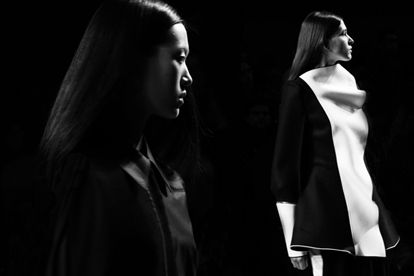
|
|
photos by Ricardo Gomes design by Aganovich
|
The minimalism that is currently sweeping the catwalks is trickling down from diehard purists like Francisco Costa at Calvin Klein, Raf Simons at Jil Sander, Phoebe Philo at Celine and Rick Owens for Rick Owens, to inspire other brands to introduce more abstract and less decorative clothes.
We can see the image of fashion cleaning up with stricter lines and linear volumes, a silhouette that is very easy to adopt by young working women and mothers. It is a fashion that seems to be demographic design more than fashion design, born out of necessity in a difficult economy.
However the abstraction in clothing seems to also echo a need in art and autonomous design to move away from the power of narration and illustration that has governed our culture during the turn of the century. Therefore, avant-garde designers are pushing ahead with the pure consideration of form in its own right, disregarding the body, encasing the torso in a tight, bold piece of heavier fabric or leather, restricting movements by its rigor.
When done in winter-white stiff felts and wovens, I cannot help but compare these new garments to the straight jackets used to contain the patients at psychiatric institutions; an item that has often attracted artists and designers. With its restrictive shape, keeping the head high atop a stovepipe cowl, its very long sleeves restraining hands from action, and its tight, sometimes asymmetric fit, these very new garments seem to impose motionless and spiritual activities. Today’s tabards with puritan pelerines and straight jackets with hoods and cowls are going to be highly influential within the minimal current, seeing many adaptations in the future; in softer and less severe fabrications such as compact jerseys, fleece and knitted luxury fibres – because consumers are not as mad as re-modernism wants them to be.
Lidewij Edelkoort
|
|
|
|
|
DO YOUR OWN AURELIE BIDERMANN
|
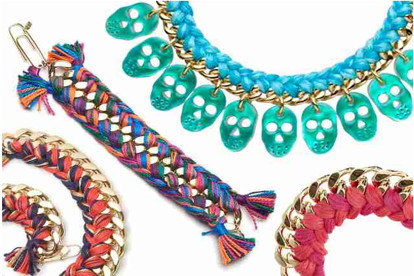
|
|
photo by aurélie bidermann
|
|
Do It Yourself has become the motto of our time governed by the recent financial crisis.
Forced by lack of funding, through the labour crisis and absence of creativity in the fashion market the consumer decided to take things into his own hands initiating his own spirit in creative and intuitive thinking. resourceful and with a sense of humour the world has begun re-cycling waist, re-using pattern, re-kindling knitting and reviving haberdashery.
Honestly WTF is a website that give insight tips on how to create or recreate a designer piece by giving it a special personal touch.
We particularly appreciated the example of redoing your Aurélie Bidermann’s bracelet.
You will only need some patience and time and before you know it it will be done.
How proud we end up being of ourselves.
Charlotte Bjorklund
www.honestlywtf.com
|
|
|
|
|
A FUTURE DERIVED FROM NATURE
|
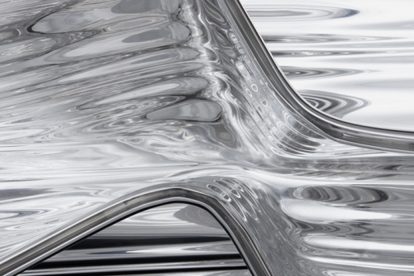
|
|
photo by thomas heatherwick
|
|
The selection of Sir David Attenborough as narrator at Björk’s Biophilia concert made me smile since his renowned documentaries were also included in the Organic Dwelling exhibition we curated for Moscow Design Week late last year. Attenborough’s nature films for the BBC are beautiful classics: his legendary intimate voice illustrates the most stunning and challenging-to-achieve footage.
The exhibition in Moscow visualised Trend Union’s forecast for architecture in the coming years (still available for purchase through your local Trend Union agent). Inspired by animal dwellings, an audiovisual set to music and ten amazing chairs were exhibited, embodying materials and architectural structures that reflect those in nature: nests, cocoons, spider webs, bee hives, armour, camouflage and decoration. The animistic power of the show, and that of our touring Post-Fossil exhibit before it, proves how the natural and the organically-made continue to have resonance in people’s minds. Today, the most archaic and pre-historic references can surprisingly become the most futuristic and aesthetically-sophisticated, moving seamlessly from earth-drawn clay to metallic alloys, from an abstract slab of stone to a kaleidoscopic botanical print, or from low-tech to avant-garde technology, including the use of 3D printing and other material innovations.
The Post-Fossil movement continues to grow, evolving organically within a society that is getting emotionally closer to nature, just like in Romantic times; beyond Avatar, a truly contemporary definition of Second Nature is on the horizon for design and architecture, full of form and pattern—able to be magnified into infinity and inspiring a new generation of designers, from Maarten Baas’ Clay series to Alexander McQueen’s trans-biological final collection, to the morphing new chairs by London-based architect-designer Thomas Heatherwick .
Philip Fimmano
www.haunchofvenison.com
|
|
|
|
|
NEW MEANING
|
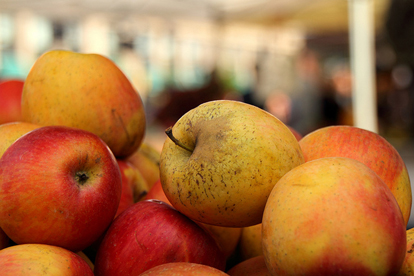
|
|
photo by mr T.
|
|
Fruits are important souvenirs and traditional gifts in Japan. To make consumers more satisfied and to be competitive, farmers have tried to make fruits as perfect as possible. This is very well explained in an interesting article on the BBC web news.
Visually, there is no scar, no color unevenness on the skin of those fruits. They all look the same in size and color. Fruits, of course, should be as sweet as possible and try not to be sour. We all know that today this kind of fruits have a great value and are sold at really very high price, displayed in beautiful boxes like jewelry, but obviously consumers’ favor have changed, especially for the one who live in big cities such as Tokyo.
Every weekend, there is a farmers market in the center of Aoyama, a well-known place with fabulous fashion shops. Even on rainy cold weekend, many people come to buy “uneven, ugly” fruits from farmers, enjoying the conversation, learning how to cook and how to eat. What is interesting is that the people coming to this market on weekend are very fashionable. From young couple to family, kids and elders, they all wear quite high-quality clothes with nice color combination, their items are basics but well-selected.
Sometimes, I even feel that this place might be the best place for street snap as Harajuku has been invaded with fast fashion. The reason they look fashionable is that they respect and love the beauty of undone, the warmth of hand crafted, the one of a kind pieces made by young designers. These people love to buy clothes in the small shops run by young artists, they love the uneven quality rather than the faceless industrial perfectness.
This trend will influence fashion and design more and more in Japan as a counter balance of industrial mass production, as Lidewij Edelkoort has already forecasted in her trend book.
Last week, Uniqlo has opened their biggest store in Ginza. Uniqlo is the icon of the mass production but at the same time they are supplying “fashion tools” for the customers, to help them imagining their own way of wearing garments.
Industrial made, unevenness, hand made, …
These words seem to have a new meaning and new attitude in coming days.
Kaori Leyasu
www.farmersmarkets.jp
www.bbc.co.uk
|
|
|
|
|
HONORING DEBT
|
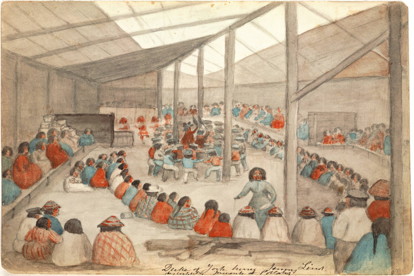
|
|
Klallam people illustrated by G. Swan
|
|
If money is widely recognized by modern economists to be a medium of exchange to replace barter, giving birth to the concept of virtual credit, there is another way to look at debt: debt has been present for millennia as a fundamental way to weave the social fabric.
According to social anthropologist David Graeber and his recently released book “Debt: The First 5,000 years”, complex debt and credit relations existed in Mesopotamia before coinage; the person with means would lend his goods, tools or know-how to the one in need in trust that the favor would be returned in kind or in other form of compensation. “There is nothing new about virtual money, … credit came first”, Graber argues. Now credit has become prominent in the financial world in the West since the gold standard was abandoned in 1971.
Debt is linked to abusive power when it allows the exploitation or control of people, and just like in Mesopotamia, overwhelmed borrowers today become enslaved to credit systems. And since debt is so overlaid by moral context, it makes it righteous to protect the creditor instead of the debtor. Interesting to note that Mesopotamia periodically had to free borrowers in “wiping the tablet clean” to forgive debt when it became too massive to be ever repaid.
Obviously, the whole world of financial experts has to work overtime at complex levels to bring the concept of debt to a more realistic and fair structure.
Debt has gotten out of hands and is the villain today. But it has been an engine of trade for thousands of years, and can only survive when rooted in honor, binding lender and borrower as a team with the common goal of benefiting the community at large. The refreshed debt concept will sound like “I lend to you because I honor you to grow my loan into benefits for many and to repay me back”, and on the borrower side “I am grateful for you lending to me, I commit to repay you back”. An ideal that has a future between two equal parties and in small communities.
Let us remember that some indigenous peoples of the Pacific Northwest Coast of Canada and United States still celebrate the tradition of Potlatch, a gift-giving festival and primary economic system whose main purpose is the redistribution and reciprocity of wealth. Once you overproduce, you give away the surplus, and your status is raised according to how much you give away, not how much you own. Some tribes even practice wealth destruction rituals.
Well, there is a huge divide between Potlatch ceremonies and the cut throat system that generated the subprime mortgage crisis. The first has long term vision in mind, and the latter is only concerned with immediate profit. So we have some margin here.
But debt is unavoidable, it is an engine of growth through moral values and accountability, and can be reinvented step by step into the fundamental element to social construct that it is.
Emmanuelle Linard
|
|
|
|
|
EXHIBITION
|
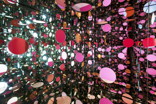
|
Yayoi Kusama
Yayoi Kusama's life have taken her from rural Japan to the New York art scene to contemporary Tokyo. Well-known for her repeating dot patterns, her art encompasses an astonishing variety of media, including painting, drawing, sculpture, film, performance and immersive installation. A must see at Tate Modern!
More
|
|
|
BOOK
|
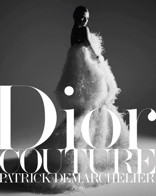
|
Dior Couture
An incredible visual collaboration between Patrick Demarchelier, a famous fashion photographer and Interview Magazine Editor Fabien Baron ."Dior Couture is like art - they are the art pieces of a fashion house," Patrick Demarchelier says. "Each piece is unique and made by hand. We shot the book in so many different places - New York, London and Paris. I wanted to put couture in interesting situations and set different moods for each picture. That's why I chose such a wide range of models - the book is made by so many different things; different places, different make-up artists, different models.
Shop
|
|
|
EXHIBITION
|
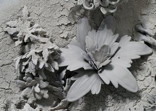
|
Swept Away
Dirt, ashes and dust are the subjects of Swept Away, an exhibition at New York's Museum of Arts and Design.Twenty six international artists have been selected . They all take the detritus of our every day life and transform it into poetic installations, painting, performances or objects.The Museum is focus on material and process and the field to discover with this subject is wide and provocative.
More
|
|
|
MORE TRENDS
|
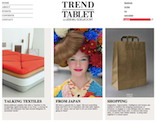
|
TREND TABLET
trendtablet.com explains how trends grow, evolve and flow, and helps us better understand and perceive how they interact in our daily lives.
this tool accessed for free is open to comments and new ideas, please contribute and be part of our network .Enjoy!
More
|
|
|
JOIN US
|
|
|
|
BOOK
|
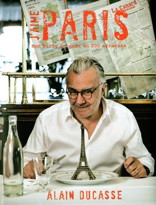
|
J'aime Paris
With his attractive book, J’aime Paris, Alain Ducasse shares some two hundred of his favorite addresses in the French capital, addresses which include grocery stores, cheese specialists, wine bars, tea rooms , boulangeries, as well as those traditional French "brasseries" full of charm .The book is not a traveller’s guide of three-star restaurants it is a fascinating compilation of places to visit in Paris to give you a "taste" of this gourmand city… It is a vibrant book ,full of colours and charm.
Shop
|
|
|
MAGAZINE
|
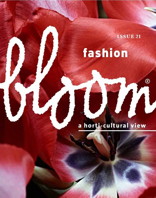
|
Bloom
Over the last few seasons we have seen flowers starting to bloom on textiles, experimental plants invading dresses and witnessed leaves whirling onto scarves.Therefore, we have created a magazine that is much like a bazaar, containing all the types of fashion that flowers have to offer, exploring their influences to the fullest.
Shop
|
|
|
|
CATALOGUE
|
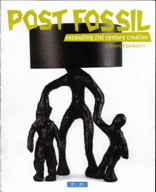
|
Post Fossil
Post Fossil. Excavating 21st century creation. This catalogue was printed on the occasion of the exhibition in Tokyo.
Shop
|
|
|
